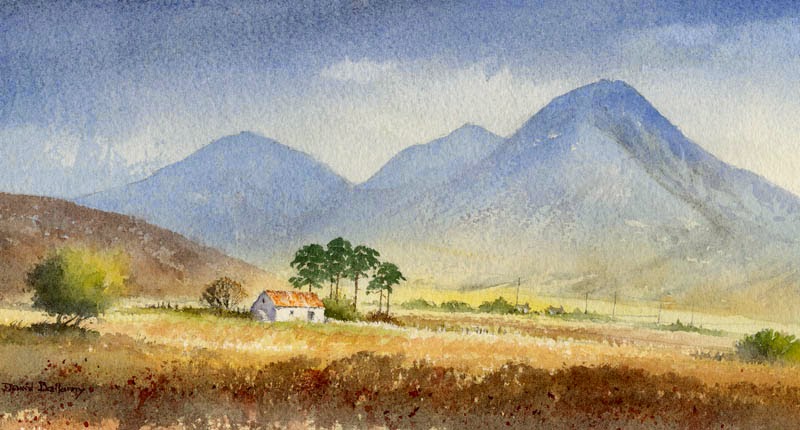My snow theme continues from the last blog as we’ve had a considerable amount of snow in Mid-Wales in the last few days – about 12 to 15 inches and it is incredibly beautiful. Before the great snowfall, though we had a dusting of snow and it is this I will concentrate on now as it will hopefully give you new ideas and help hone observation skills.
This is part of the view from my bedroom window, and may appear unremarkable. It does have a number of lessons for us, though. Starting from the top, you will see that on the left the white moorland top is caught white against a medium grey sky, but as the eye travels to the right this changes gradually as cloud shadow falls across the moor. At the far right the moor is now darker than the sky. This counterchange effect is extremely useful to add interest to our work, especially in the less exciting parts of the composition.
Below that top band lies rough ground with dead vegetation. The dusting of snow has all but disappeared here but you can detect a slight warming of the colour. One way of achieving this in a watercolour is to rub a candle horizontally across the paper, then lay a wash which perhaps includes some light red to suggest the warm colour. Rough paper will accentuate this technique, and you can create the white pathways visible in places by combining this with masking fluid.
Beneath the band of warmer, broken colour the snow lies on a smoother field and so is more continuous. Grey cast tree shadows fall across it in places and there is an occasional patch of rough ground here and there.
As you are no doubt aware, snow does not always look a pristine white. Observe and analyse the scene before choosing your paper, methods and approach; alter your cloud shadows and move these various parts around to suit yourself. It’s great, creative fun, so enjoy it!
My Winter Landscapes in Watercolour has a lot more on the subject of tackling snow scenes

